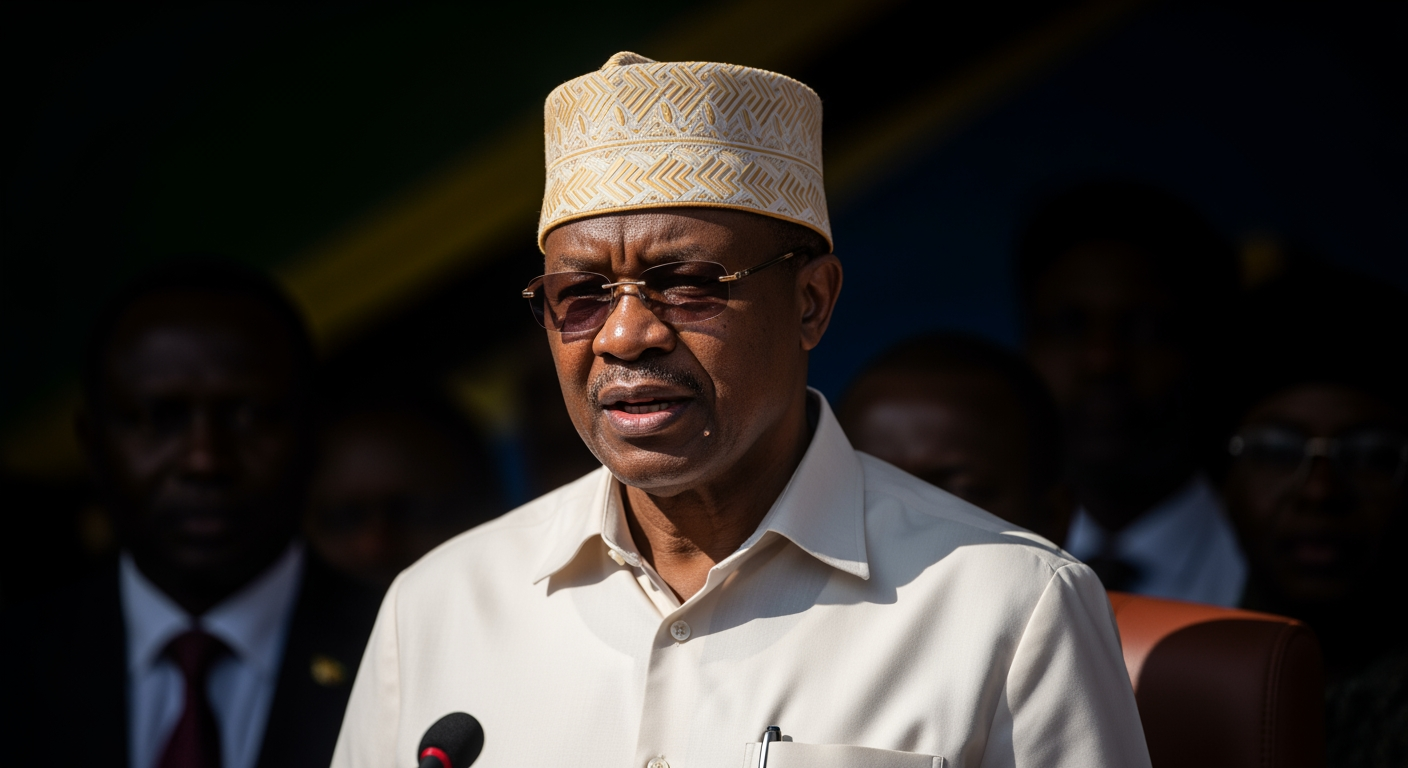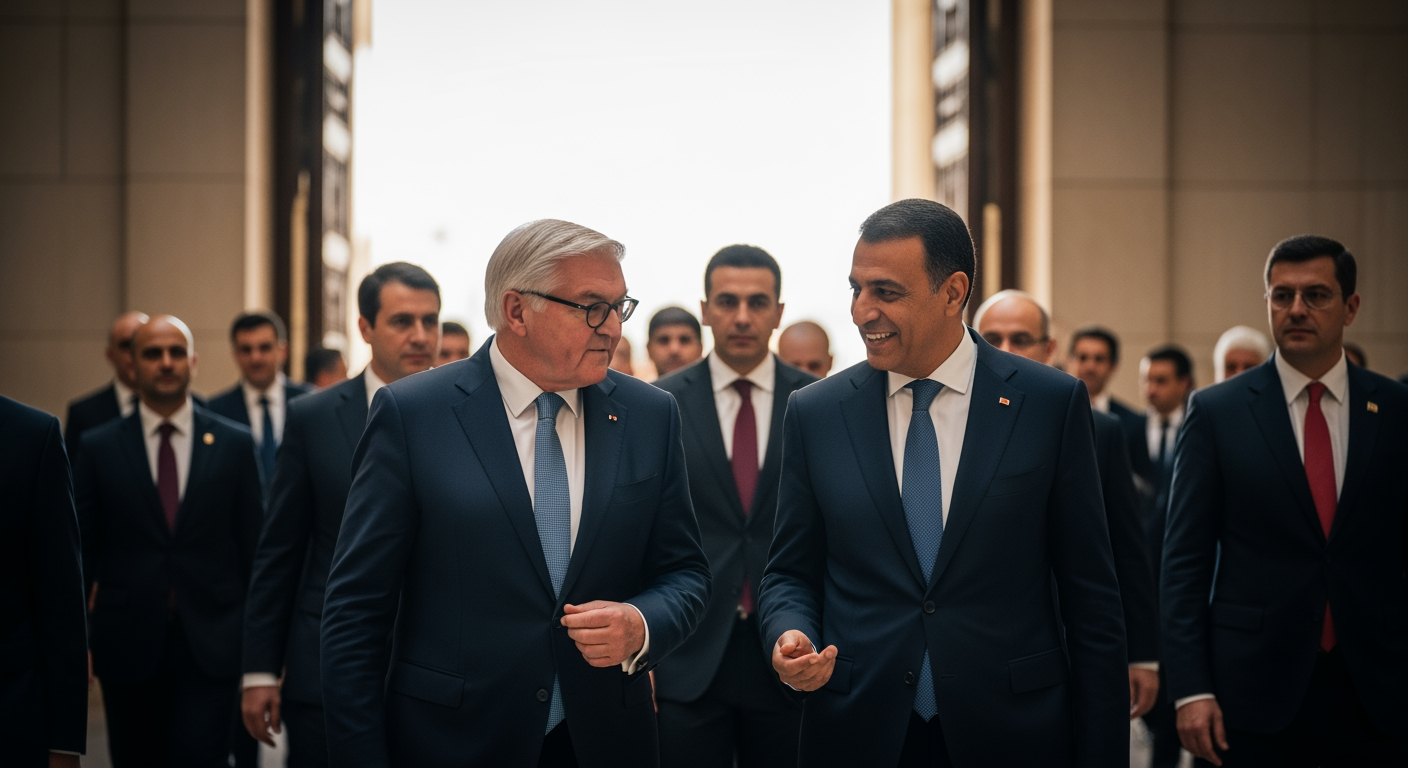Related Articles

Tanzanian Leader Secures Landslide Re-election Amidst Widespread Turmoil and Repression Concerns

APEC Leaders Chart Future Course with Landmark Declarations on AI and Demographics





GIZA, EGYPT – After decades of anticipation and meticulous development, the Grand Egyptian Museum (GEM) officially opened its monumental doors on November 1, 2025, near the iconic Giza Pyramids. The inauguration marks a pivotal moment for Egypt, solidifying its place as a global cultural epicenter and drawing significant international attention, including the presence of German President Frank-Walter Steinmeier. His attendance, at the invitation of Egyptian President Abdel Fattah el-Sisi, highlights the deep historical and cultural ties between Germany and Egypt, signaling a strengthened commitment to shared heritage and diplomatic cooperation.
The opening ceremony, a culmination of a project spanning over 30 years and costing approximately $1.2 billion, officially commenced today, ushering in a new era for the preservation and presentation of ancient Egyptian civilization. The Grand Egyptian Museum, often hailed as the largest museum in the world dedicated to a single civilization, is poised to redefine the global understanding of Egypt's rich past. Situated just two kilometers from the Giza Pyramid Complex, its striking architectural design, inspired by the geometry of the pyramids, seamlessly blends ancient reverence with modern innovation.
The museum is set to house an unparalleled collection of over 100,000 artifacts, offering an expansive journey through millennia of Egyptian history, from the Predynastic Period to the Greco-Roman era. A crowning jewel of the GEM is the complete collection of King Tutankhamun's treasures, comprising 5,398 pieces, which will be displayed together for the first time. This includes the iconic golden mask, an array of jewelry, chariots, and furniture, offering an intimate glimpse into the life and afterlife of the boy pharaoh. Beyond Tutankhamun's splendor, visitors will encounter the 53-foot-high Hanging Obelisk at the entrance and ascend a Grand Staircase flanked by colossal statues of Egypt’s mighty rulers, including Ramses II. The complex also features the King Khufu's Boats Museum, housing ancient solar boats vital to understanding pharaonic beliefs about the afterlife.
Integral to the GEM's mission is its state-of-the-art Conservation Center, one of the largest and most advanced in the Middle East. Operational since 2010, this facility houses 19 specialized laboratories dedicated to the restoration and scientific documentation of artifacts, ensuring the meticulous preservation of Egypt’s invaluable heritage for future generations. The museum’s commitment to modernity extends to its visitor experience, incorporating artificial intelligence, augmented reality, and multilingual digital archives to enhance scholarly research and public engagement.
President Frank-Walter Steinmeier's attendance at the GEM's grand opening underscores the significant diplomatic and cultural partnership between Germany and Egypt. His presence is part of a broader African tour, reflecting Germany's keen interest in fostering stronger economic cooperation and cultural exchange with nations across the continent. Accompanied by his wife, Elke Büdenbender, and a business delegation, President Steinmeier's visit includes bilateral discussions with President el-Sisi concerning regional developments and avenues for increased collaboration.
In expressing his anticipation for the museum's inauguration, President Steinmeier articulated that the GEM represents not only a milestone for Egypt but also a profound celebration of global culture—a timeless testament to humanity's collective artistic and scientific legacy. Germany has historically played a crucial role in Egyptian archaeology and heritage preservation, a tradition further exemplified by the substantial contributions of a German design office to the GEM's exhibition spaces, particularly the immersive narrative of the Tutankhamun hall. German Ambassador to Cairo, Jürgen Scholz, emphasized that the museum stands as a powerful symbol of the close cooperation between the two nations and their mutual dedication to safeguarding human cultural heritage. This collaboration extends beyond cultural endeavors, with German businesses finding Egypt an increasingly attractive market for investment, particularly in infrastructure, digitization, and various industries.
The Grand Egyptian Museum is poised to be a powerful catalyst for Egypt's vital tourism industry and a significant driver for its economy. Officials project that the GEM could attract up to 5 million visitors annually, injecting considerable revenue and boosting national pride. The project, conceived in the early 1990s due to the overcrowding and environmental challenges faced by the old Egyptian Museum in Tahrir Square, represents a visionary effort to consolidate and showcase Egypt's treasures in a fitting, modern environment.
Beyond its economic impact, the GEM is envisioned as a vibrant platform for intercultural exchange and knowledge diplomacy. It serves to reposition Egypt not merely as a custodian of the past but as an active participant in global conversations about heritage preservation, innovation, and cultural sustainability. The museum’s mission resonates with a broader commitment to understanding how ancient civilizations shaped human thought through art, language, and symbolism, tracing a visual narrative that links history, science, and humanity. The long journey to its completion, marked by various delays due to political changes, funding complexities, and global events, underscores the unwavering determination behind this monumental undertaking.
The opening of the Grand Egyptian Museum on November 1, 2025, with distinguished international participation such as that of German President Frank-Walter Steinmeier, transcends a mere cultural event; it is a profound statement on global cooperation, the enduring power of human heritage, and Egypt's forward-looking vision. This architectural and archaeological marvel stands as a testament to the shared human endeavor to explore, understand, and celebrate the past, forging cultural bridges that connect civilizations across time and geography. The GEM is set to be a beacon of learning and wonder, inspiring millions and fostering a deeper appreciation for the unparalleled legacy of ancient Egypt.